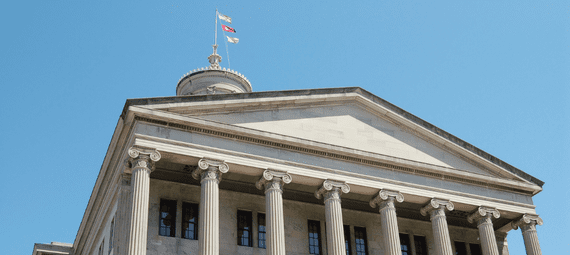The 113th General Assembly convened yesterday at noon to begin a new two-year legislative session. The body will be in an administrative session, conducting swearing-in ceremonies for members and other administrative activities, such as elections for speaker and the adoption of rules in the House and the Senate. Once complete, the legislature will announce a date to start the regular session and begin the process of enacting, amending, and repealing state laws.
Legislative leaders have indicated they plan to prioritize an update to the state’s abortion ban, banning gender-affirming surgeries for minors, criminal justice reform, and limiting the size of metropolitan governing bodies. Governor Lee has indicated his administration’s top issues include violent crime and transportation infrastructure.
This session brings new faces, new district boundaries, and the potential for new action on civic and economic policies in Tennessee. Read on for highlights of what’s new and what we’ll be watching in this session:
- Newly Drawn Legislative Districts: The 2020 redistricting cycle resulted in some brand new districts and new groupings of counties into shared districts.
- New Members: Following retirements and the 2022 election, there are some new faces in the legislature this year.
- ThinkTennessee’s Legislative Priorities: We will be watching legislation impacting our priority issue areas of strengthening democracy and working families.
What’s New?
Newly Drawn Legislative Districts
This session is the first featuring the newly drawn districts following last year’s redistricting process. Tennessee’s population grew by 8.9 percent over the last decade (from 6.3 million in 2010 to 6.9 million in 2020). As House and Senate districts are required to share populations as close to equal as possible, districts needed to be redrawn to incorporate larger populations.
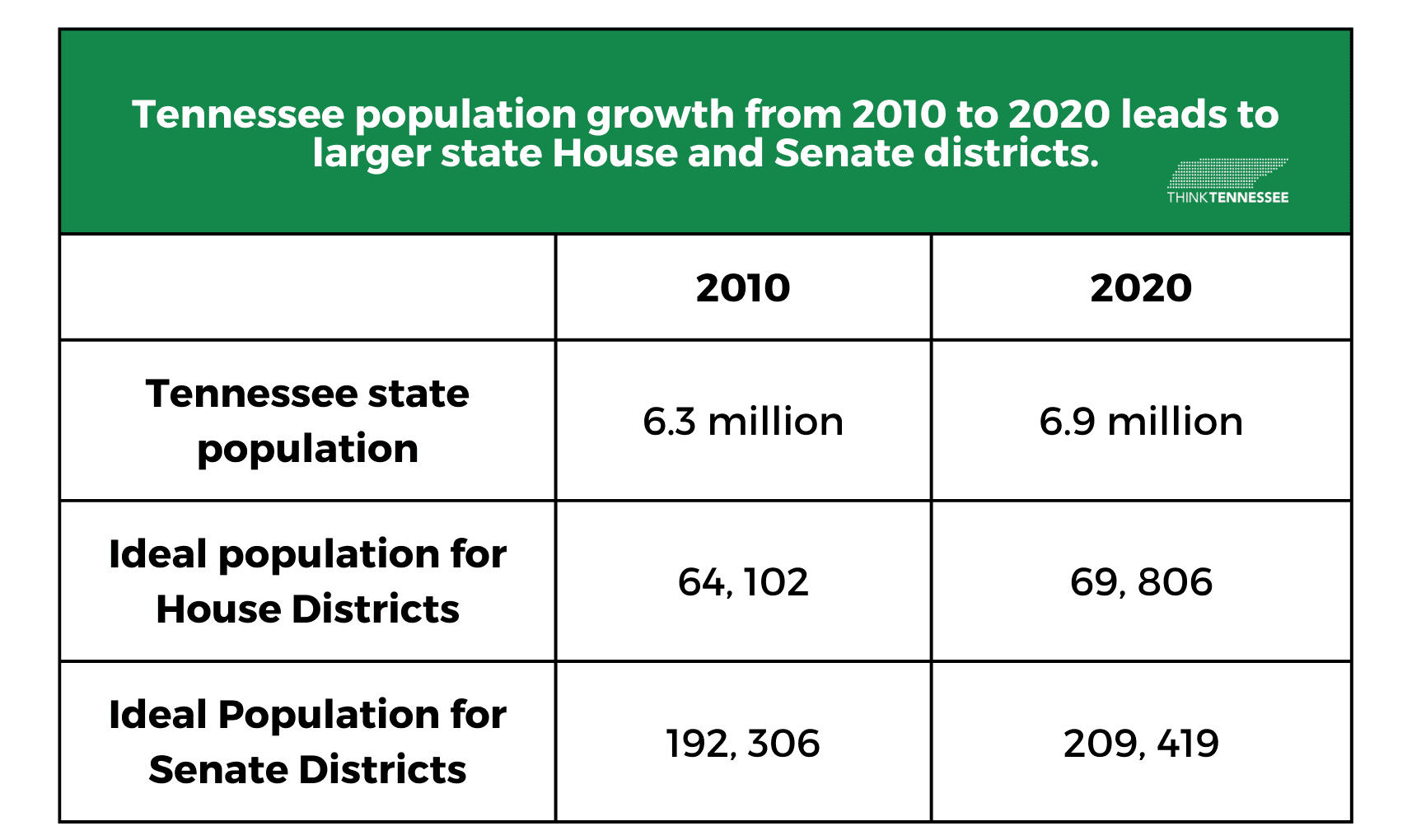
Tennessee’s population growth was not distributed evenly across the state. Populations declined in 30 counties, while 18 counties saw growth of at least 10 percent. The new district maps reflect this population shift with different county pairings in shared districts and new representation for some cities and counties.
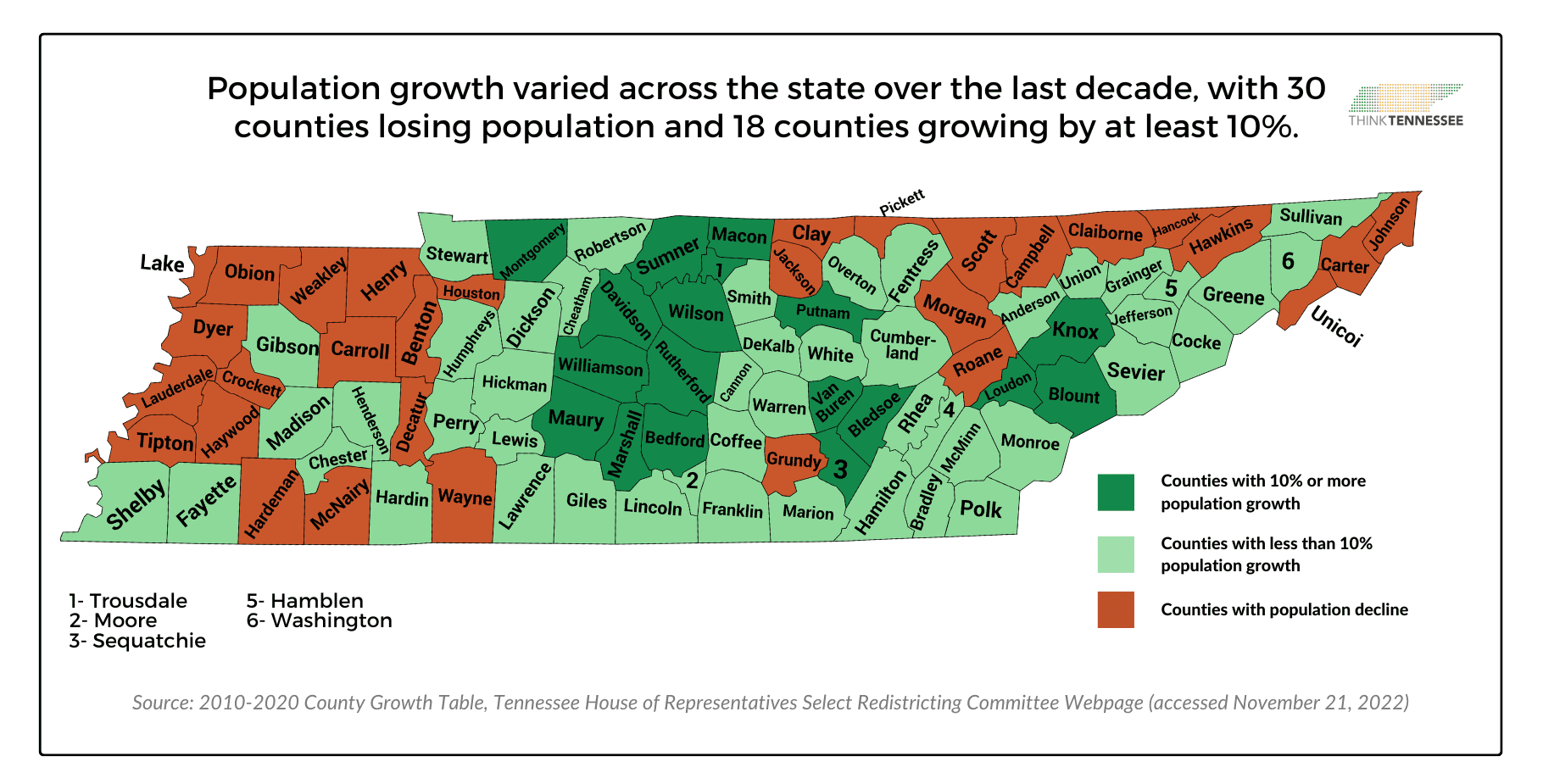
Here are some highlights from the new House and Senate maps.
House Districts Highlights
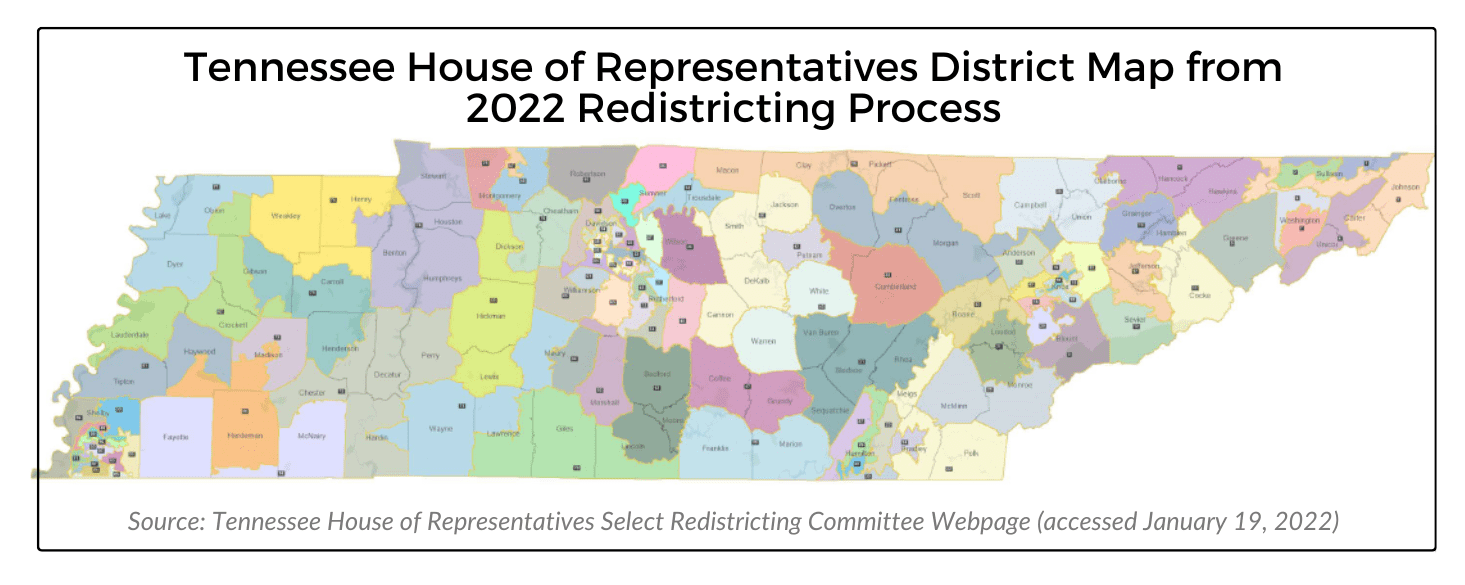
House districts were redrawn to achieve the updated ideal population. While most districts were reconfigured (87), a few remained the same (6), some new ones were added (6), and two counties either gained or lost a district.
- Six districts stayed exactly the same: Even with population shifts, six House districts did not get redrawn and remained as they were previously.
- Six districts are newly drawn districts: As new districts, there were no incumbent members; all have newly elected representatives.
- Two counties either gained or lost a district: Rutherford County, which saw among the highest population growth (+ 30.04%) added a new district, going from four districts to five within the county. Shelby County, with minimal growth (+ 0.23%), lost a district, going from 14 to 13.
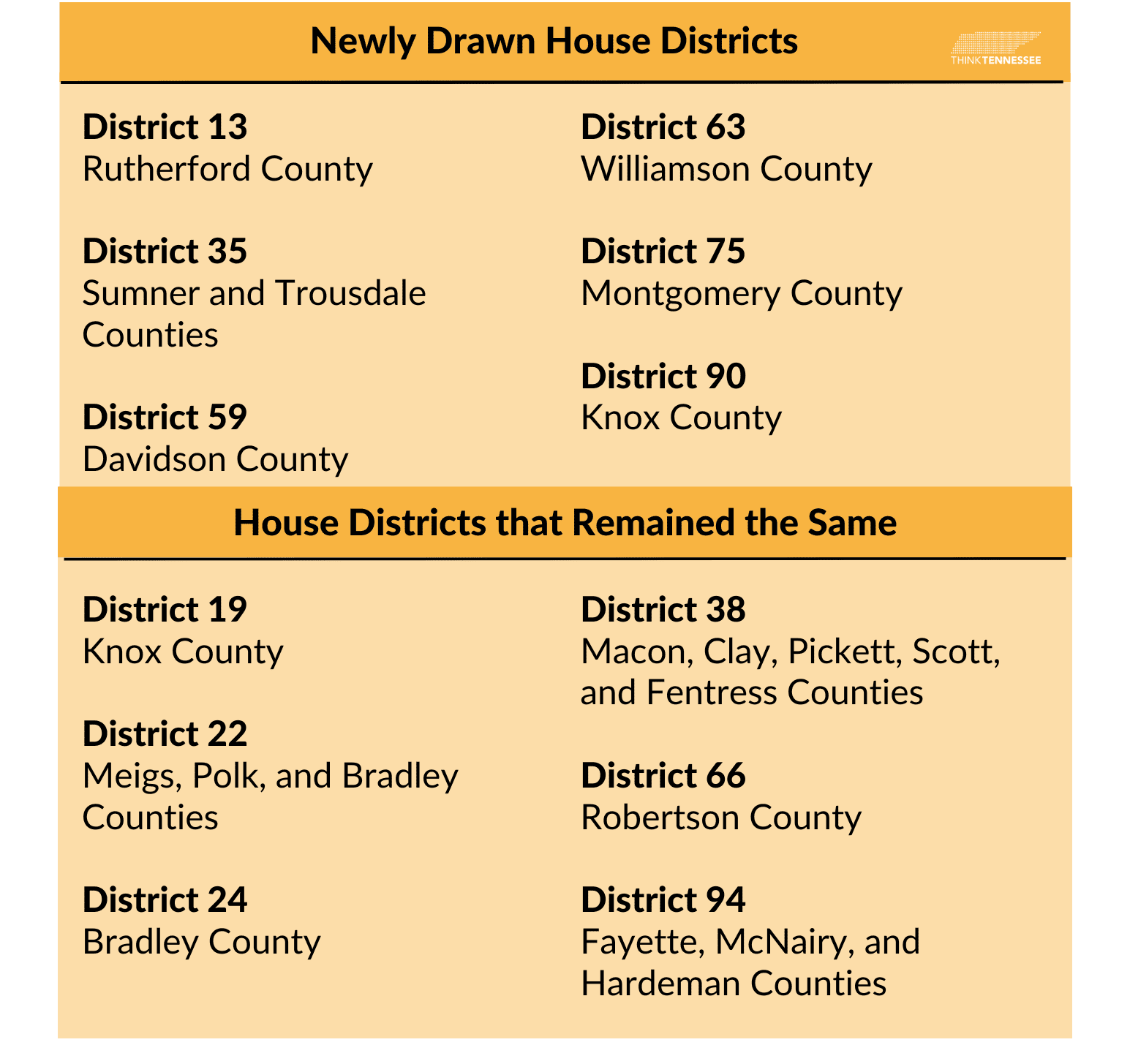
Senate Districts Highlights
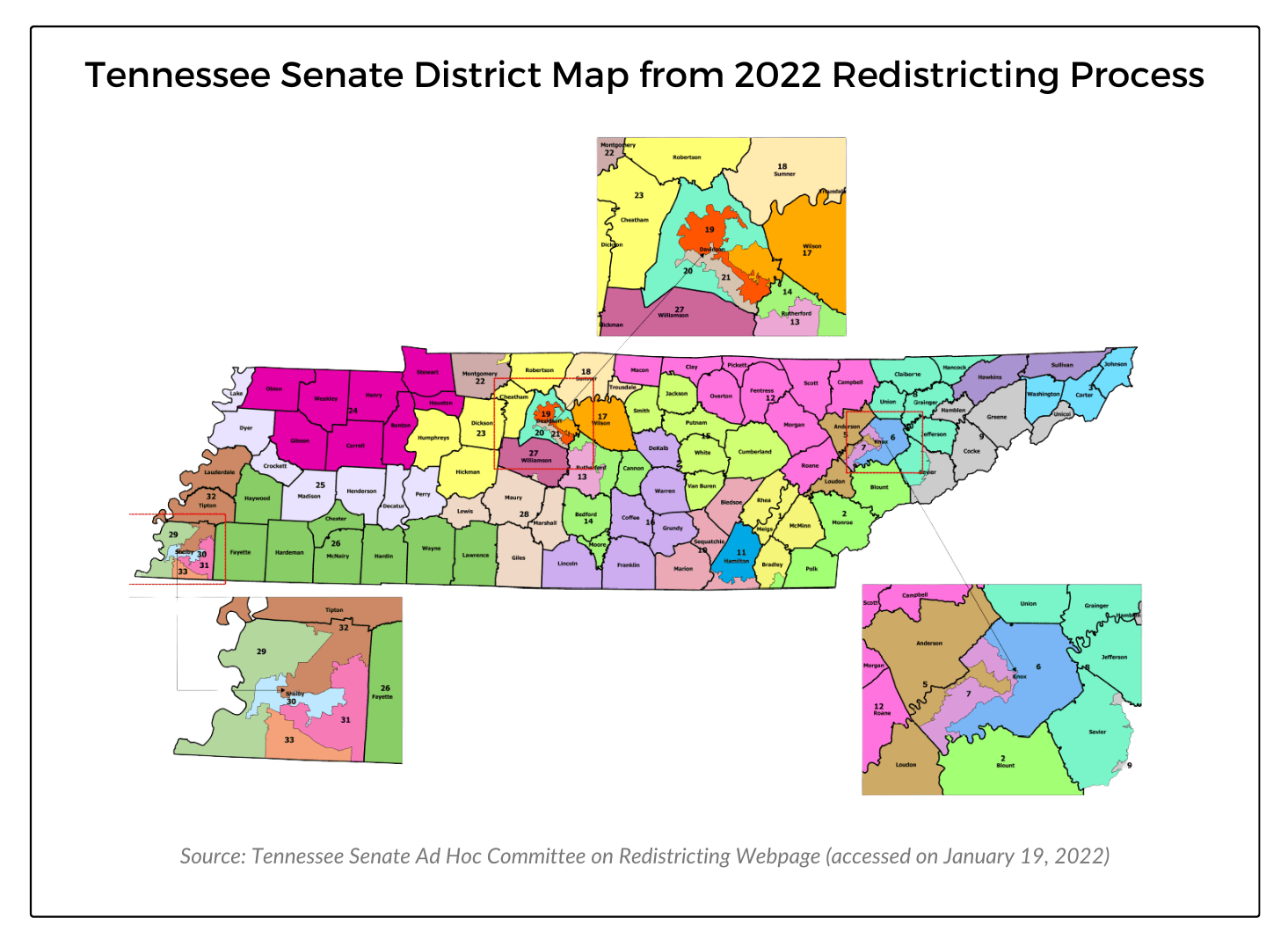
The new Senate districts reflect the varying population shifts across the state, with declines in West and East Tennessee and growth in the Middle Tennessee counties.
- Population declines shifted districts in West and East Tennessee. In both West and East Tennessee, population losses resulted in district shifts incorporating new county groupings. To see these changes in more detail, visit the interactive map in this Tennessean article.
- Large population growth in Middle Tennessee resulted in new county pairings. Previously, Montgomery and Wilson counties were paired in districts including multiple other counties. But population growth of almost 30% in both counties resulted in each now making up almost entire districts in and of themselves. Additionally, Williamson County, which had been its own district, grew by 35.23%, pushing it over the ideal population, requiring a small portion of it to be split into the neighboring district to the south.
- Districts in the four big cities shifted, with Knoxville gaining a senator. Memphis, Nashville, and Chattanooga all have different district configurations, yet all three retained the same number of districts (five in Shelby, four in Davidson, and two in Hamilton). Knoxville gained a Senate district and is now represented by three senators.
New Members
The 113th General Assembly includes a number of new faces, as a result of 16 members retiring after last session and three losing re-election races. In addition to the new members, both Representative Greg Martin (R-District 26) and Senator London Lamar (D-District 33) who had been appointed to fill vacant seats last session, were elected to remain in their seats. And longtime Representative Barbara Cooper (D-District 86) passed away at age 93 just before the election, leaving that seat open until a special election can be held on January 24 (primary) and March 14 (general).
The party breakdown changed slightly, with an increase of two Republican seats in the House (one the result of a Republican win over an Independent and the other one the result of a newly drawn district). The House now has 75 Republican members and 24 Democrat members, and the Senate retains 27 Republican members and 6 Democrat members.
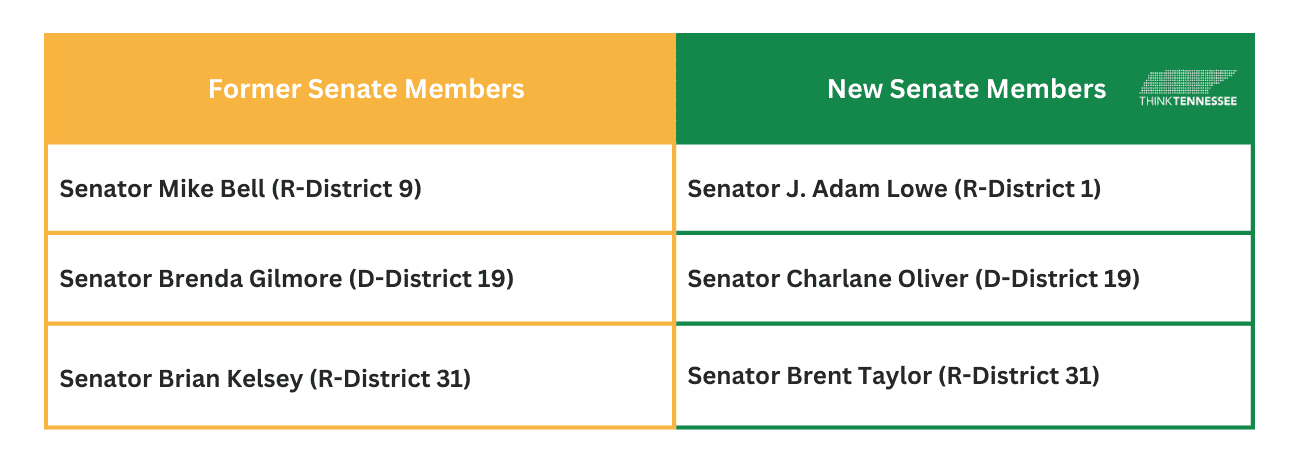
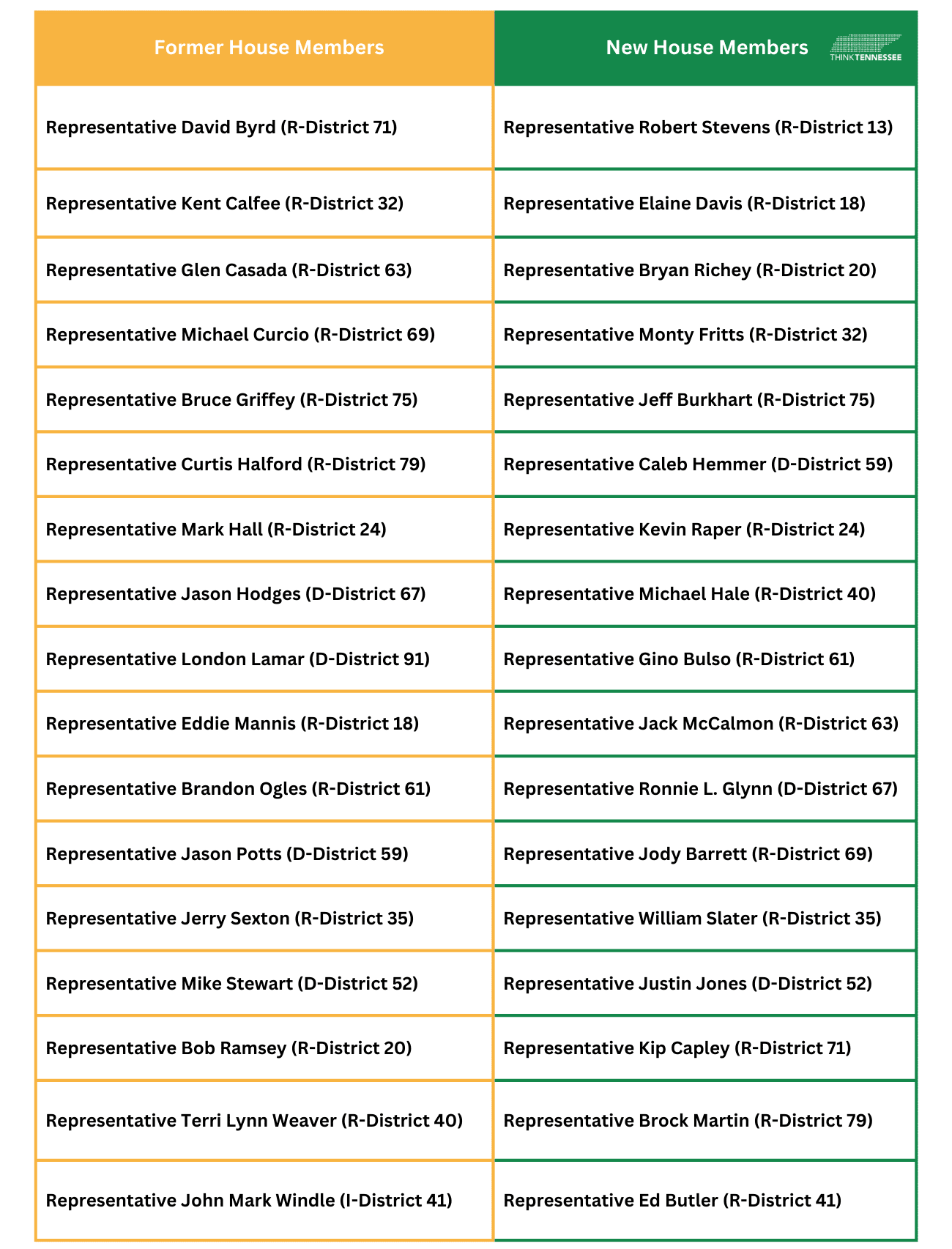
What We’ll Be Watching
ThinkTennessee is a nonpartisan, results-oriented think tank that uses research, engagement, and advocacy to build a state where all Tennesseans are civically engaged and economically secure. We envision a state where all Tennesseans can vote, make their voice heard, trust in a transparent and effective state and local government, and where they can earn enough to support themselves and their families, afford their typical household expenses, and build their savings, rather than fall into debt.
This year, we will focus on the following legislative priorities:
Strengthening Democracy
- Support legislative efforts that promote voting access and opportunities for eligible Tennesseans to cast their ballots.
- Advocate to remove the prohibition on sharing absentee ballot application forms with eligible voters.
- Support opportunities to streamline the voting rights restoration process.
Working Families
- Advocate for paid family leave for state employees.
- Research and advocate for fair wages and labor practices.
- Promote reforms to mitigate the harms of court debt, such as eliminating driver’s license revocations for overdue debt.
- Support efforts to create a more affordable, more multimodal, and more sustainable – both environmentally and financially self-sustaining – transportation system.
- Advocate for and invest in high-quality, safe, and affordable housing access for every Tennessean.
Want to Follow Along?
If you’re interested in learning how bills become laws in Tennessee, take a look at this informative brief, and stay tuned for mid- and post-session updates as the session proceeds.
Note: ThinkTennessee followed the redistricting process in 2022 closely (see our summaries here and here). The maps shared here were accessed from legislative committee websites last year. The House committee website can be found through the “House Archives” page, but the Senate committee page no longer appears to be active and available.




